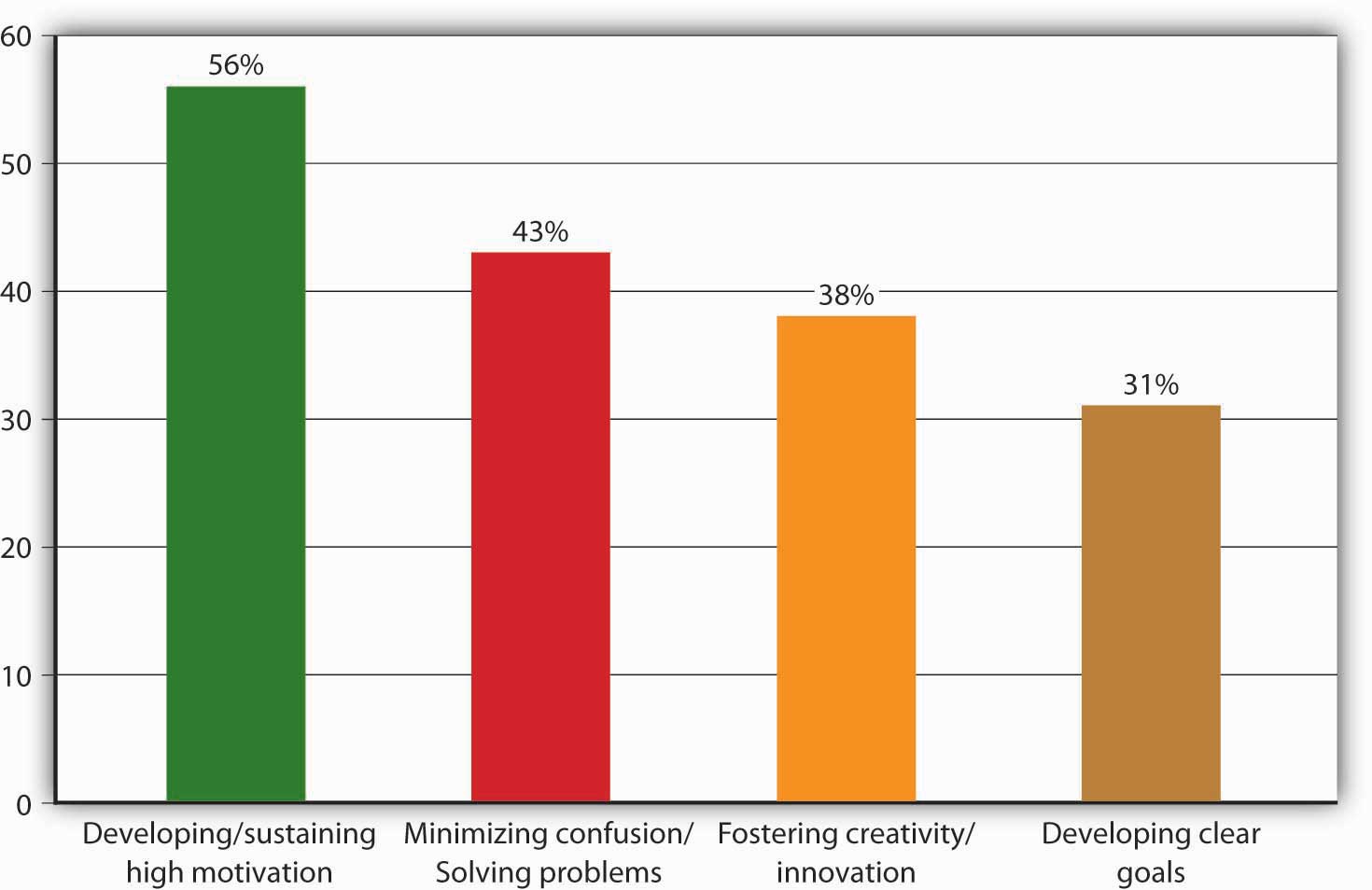8.2 Why Teamwork Works
Learning Objectives
- Explain why teams may be effective or ineffective.
- Identify factors that contribute to team cohesiveness.
Now that we know a little bit about how teams work, we need to ask ourselves why they work. Not surprisingly, this is a fairly complex issue. In this section, we’ll answer these closely related questions: Why are teams often effective? Why are they sometimes ineffective?
Factors in Effective Teamwork
First, let’s begin by identifying several factors that, in practice, tend to contribute to effective teamwork. Generally speaking, teams are effective when the following factors are met (Whetten & Cameron, 2007):
- Members depend on each other. When team members rely on each other to get the job done, team productivity and efficiency are high.
- Members trust one another. Teamwork is more effective when members trust each other.
- Members work better together than individually. When team members perform better as a group than alone, collective performance exceeds individual performance.
- Members become boosters. When each member is encouraged by other team members to do his or her best, collective results improve.
- Team members enjoy being on the team. The more that team members derive satisfaction from being on the team, the more committed they become.
- Leadership rotates. Teams function effectively when leadership responsibility is shared over time.
Most of these explanations probably make pretty clear intuitive sense. Unfortunately, because such issues are rarely as clear-cut as they may seem at first glance, we need to examine the issue of group effectiveness from another perspective—one that considers the effects of factors that aren’t quite so straightforward.
Group Cohesiveness
The idea of group cohesiveness refers to the attractiveness of a team to its members. If a group is high in cohesiveness, membership is quite satisfying to its members; if it’s low in cohesiveness, members are unhappy with it and may even try to leave it. The principle of group cohesiveness, in other words, is based on the simple idea that groups are most effective when their members like being members of the group (George & Jones, 2008; Festinger, 1950).
What Makes a Team Cohesive?
Numerous factors may contribute to team cohesiveness, but in this section, we’ll focus on five of the most important:
- Size. The bigger the team, the less satisfied members tend to be. When teams get too large, members find it harder to interact closely with other members; a few members tend to dominate team activities, and conflict becomes more likely.
- Similarity. People usually get along better with people like themselves, and teams are generally more cohesive when members perceive fellow members as people who share their own attitudes and experience.
- Success. When teams are successful, members are satisfied, and other people are more likely to be attracted to their teams.
- Exclusiveness. The harder it is to get into a group, the happier the people who are already in it. Status (the extent to which outsiders look up to a team, as well as the perks that come with membership) also increases members’ satisfaction.
- Competition. Members value membership more highly when they’re motivated to achieve common goals—especially when those goals mean outperforming other teams.
Figure 8.2
A cohesive team with goals that are aligned with the goals of the organization is most likely to succeed.
Teamwork and team spirit – CC BY-ND 2.0.
There’s such a thing as too much cohesiveness. When, for instance, members are highly motivated to collaborate in performing the team’s activities, the team is more likely to be effective in achieving its goals. Clearly, when those goals are aligned with the goals of the larger organization, the organization, too, will be happy. If, however, its members get too wrapped up in more immediate team goals, the whole team may lose sight of the larger organizational goals toward which it’s supposed to be working.
Groupthink
Likewise, it’s easier for leaders to direct members toward team goals when members are all on the same page—when there’s a basic willingness to conform to the team’s rules and guidelines. When there’s too much conformity, however, the group can become ineffective: It may resist change and fresh ideas and, what’s worse, may end up adopting its own dysfunctional tendencies as its way of doing things. Such tendencies may also encourage a phenomenon known as groupthink—the tendency to conform to group pressure in making decisions, while failing to think critically or to consider outside influences.
Groupthink is often cited as a factor in the explosion of the space shuttle Challenger in January 1986: Engineers from a supplier of components for the rocket booster warned that the launch might be risky because of the weather but were persuaded to reverse their recommendation by NASA officials who wanted the launch to proceed as scheduled (Griffin, 2011).
Why Teams Fail
Teams don’t always work. To learn why, let’s take a quick look at four common obstacles to success in introducing teams into an organization (Greenberg & Baron, 2008):
- Unwillingness to cooperate. Failure to cooperate can occur when members don’t or won’t commit to a common goal or set of activities. What if, for example, half the members of a product-development team want to create a brand-new product and half want to improve an existing product? The entire team may get stuck on this point of contention for weeks or even months.
- Lack of managerial support. Every team requires organizational resources to achieve its goals, and if management isn’t willing to commit the needed resources—say, funding or key personnel—a team will probably fall short of those goals.
- Failure of managers to delegate authority. Team leaders are often chosen from the ranks of successful supervisors—first-line managers who, as we saw in Chapter 6 “Managing for Business Success”, give instructions on a day-to-day basis and expect to have them carried out. This approach to workplace activities may not work very well in leading a team—a position in which success depends on building a consensus and letting people make their own decisions.
- Failure of teams to cooperate. If you’re on a workplace team, your employer probably depends on teams to perform much of the organization’s work and meet many of its goals. In other words, it is, to some extent, a team-based organization, and as such, reaching its overall goals requires a high level of cooperation among teams (Thompson, 2008). When teams can’t agree on mutual goals (or when they duplicate efforts), neither the teams nor the organization is likely to meet with much success.
Motivation and Frustration
Finally, remember that teams are composed of people, and whatever the roles they happen to be playing at a given time, people are subject to psychological ups and downs. As members of workplace teams, they need motivation, and as we observed in Chapter 7 “Recruiting, Motivating, and Keeping Quality Employees”, when motivation is down, so are effectiveness and productivity. As you can see in Figure 8.3 “Sources of Frustration”, the difficulty of maintaining a high level of motivation is the chief cause of frustration among members of teams. As such, it’s also a chief cause of ineffective teamwork, and that’s one reason why more employers now look for the ability to develop and sustain motivation when they’re hiring new managers (Thompson, 2008).
Key Takeaways
-
Generally speaking, teams are effective when the following are true:
- Members are interdependent.
- Members work better together than individually.
- Teams work well enough to satisfy members.
- Leadership rotates.
- Members help one another.
- Members become boosters.
- Members trust one another.
- Group cohesiveness refers to the attractiveness of a team to its members. If a group is high in cohesiveness, membership is quite satisfying to its members; if it’s low in cohesiveness, members are unhappy with it and may even try to leave it.
-
Common obstacles to team success include the following:
- Unwillingness to cooperate
- Lack of managerial support
- Failure of managers to delegate authority
- Failure of teams to cooperate
Exercise
(AACSB) Analysis
At some point in the coming week, while you’re working on an assignment for any one of your classes, ask at least one other member of the class to help you with it or to collaborate with you in studying for it. After you’ve completed your assignment, make a list of the advantages and disadvantages of working on the assignment with another person.
References
Festinger, L., “Informal Social Communication, Psychological Review 57 (1950): 271–82.
George, J. M., and Gareth R. Jones, Understanding and Managing Organizational Behavior, 5th ed. (Upper Saddle River, NJ: Pearson Education, 2008), 371–77.
Greenberg, J., and Robert A. Baron, Behavior in Organizations, 9th ed. (Upper Saddle River, NJ: Pearson Education, 2008), 317–18.
Griffin, E., “Groupthink of Irving Janis,” 1997, http://www.doh.state.fl.us/alternatesites/cms-kids/providers/early_steps/training/documents/groupthink_irving_janus.pdf (accessed October 11, 2011).
Thompson, L. L., Making the Team: A Guide for Managers (Upper Saddle River, NJ: Pearson Education, 2008), 323–24.
Whetten, D. A., and Kim S. Cameron, Developing Management Skills, 7th ed. (Upper Saddle River, NJ: Pearson Education, 2007), 497.



